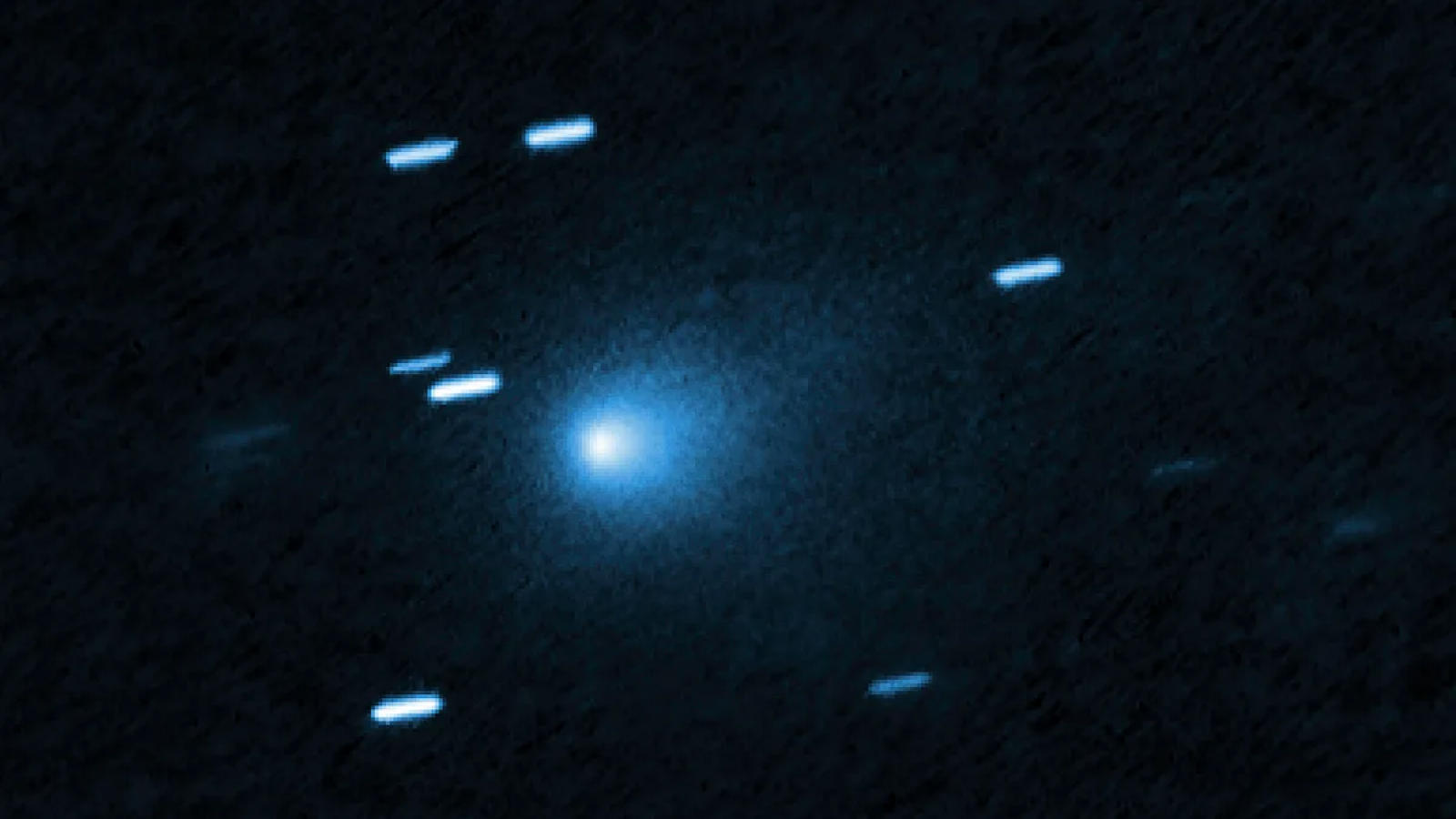NASA telescope spotted rare interstellar comet 2 months before it was officially 'discovered'
NASA's planet-hunting TESS telescope observed the rare interstellar comet 3I/ATLAS two months before it was formally "discovered," and those early observations reveal the comet is surprisingly active.

One of the advantages of having so many telescopes watching large parts of the sky is that, if astronomers find something interesting, there are probably images of it from before it was officially discovered sitting in the data archives of other satellites that no one thought to look at. That has certainly been the case for our newest interstellar visitor, 3I/ATLAS, which, though discovered in early July, had been visible on other telescopes as early as May.
We previously reported on Vera Rubin's detection of 3I/ATLAS well before it was officially found, and now a new paper has found the interstellar object in TESS's data going back to early May — and it looks like it may have been "active" around that time.
The Transiting Exoplanet Survey Satellite (TESS) isn't designed to find interstellar visitors, or anything faint for that matter. As its name implies, it is designed to look at stars (which are bright) and watch exoplanets traverse in front of them, watching the host star's light curve dip as they do. But, data is data, and since TESS happened to be looking at a part of the sky where 3I/ATLAS was supposed to be earlier this year, researchers Adina Feinstein and Darryl Seligman from Michigan State and John Noonan from Auburn decided to see if they could find any data on it in the telescopes archives.
Turns out they could, going as far back as May 7th, 2025, over the course of two separate observational periods. Since TESS captures an image every 200 seconds, and 3I/ATLAS is moving much more quickly than the traditional stars TESS is designed to look at, the team had to use a technique known as "shift-stacking". They predicted where the interstellar object (ISO) would be in each picture, shifted the pictures so the ISO would be at the same spot in every picture, and then stacked multiple of the pictures together to get a clear signal of an object that would otherwise be too faint to find in a single picture.
3I/ATLAS started the observational period at about 6.35 AU, and moved to about 5.47 AU by the end of a second window on June 2nd. During that time, its flux increased by a factor of 5, though the decrease in distance would have only accounted for an increased brightness about 1.5
Related: James Webb telescope images reveal there's something strange with interstellar comet 3I/ATLAS
There has already been plenty of speculation about what might be causing some of the more interesting features of 3I/ATLAS, ranging from mistakes in data collection to the object itself being alien technology. However, the authors have a much more mundane explanation for this seemingly bizarre occurrence — the ISO was likely outgassing "hypervolatile" materials like carbon dioxide and carbon monoxide. These have a much higher sublimation point than water ice, and can cause a significant increase in brightness, but most of the comets in our own solar system don't have any hypervolatiles left, so they wouldn't show the same dramatic increase in brightness that far away from the Sun. To the researchers, this is another data point that comets from other solar systems likely have a very different composition than those bound to ours.
Get the world’s most fascinating discoveries delivered straight to your inbox.
In an effort to find even more differences, they also tried to look at the rotational period of the ISO's nucleus. However, there wasn't enough of a clear signal to delineate whether or not the nucleus was actually moving. Most likely this was caused by a coma obscuring any noticeable features, making it hard for TESS to detect any changes in brightness caused by its rotation.
As we continue to study every new interstellar object that comes across our path, we'll begin to find out more and more about them. This paper adds to that corpus of knowledge, and there will undoubtedly be more to come as astronomers start sifting through old data on every telescope they can find trying to unlock the mysteries of our enigmatic visitors.
The original version of this article was published on Universe Today.
Andy has been interested in space exploration ever since reading Pale Blue Dot in middle school. An engineer by training, he likes to focus on the practical challenges of space exploration, whether that's getting rid of perchlorates on Mars or making ultra-smooth mirrors to capture ever clearer data. When not writing or engineering things he can be found entertaining his wife, four children, six cats, and two dogs, or running in circles to stay in shape.
You must confirm your public display name before commenting
Please logout and then login again, you will then be prompted to enter your display name.

